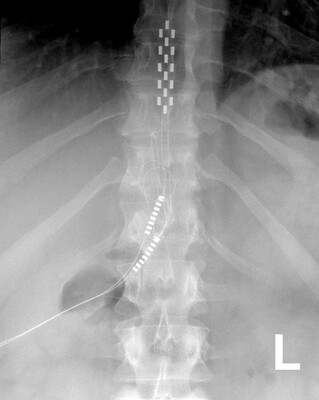What is Electrical Stimulation of the Spine?
There have been remarkable advancements in spinal care, especially in the area of electrical stimulation of the spine. This innovative technique has become a game changer for many patients suffering from chronic back pain. It can offer a new lease on life for many patients who have struggled with debilitating discomfort.
The Basics: What is Electrical Spinal Stimulation of the Spine?
Electrical stimulation of the spine, also known as (SCS), involves delivering low-level electrical signals directly to the spinal cord or specific nerves. This is typically achieved through a small device, like a pacemaker implanted under the skin. The device is connected to thin wires that are positioned near the spinal cord. When activated, these leads emit electrical pulses that interfere with the nerve signals that cause pain.
How Does SCS Work?
The mechanism behind SCS is rooted in the “Gate Control Theory” of pain. According to this theory, stimulating nerves in the spinal cord can “close the gate” to painful signals before they reach the brain. The electrical impulses modify the pain messages by blocking them or transforming the painful sensation into a more tolerable tingling feeling, known as paresthesia.
Who Can Benefit?
SCS is typically recommended for patients who have not found relief from other treatments, such as medications, physical therapy, or surgery. It’s particularly effective for conditions like:
- Chronic back and neck pain
- Nerve-related pain (neuropathic pain)
- Complex regional pain syndrome (CRPS)
- Pain after spinal surgery (failed back surgery syndrome)
What Happens in this Procedure?
The implantation of an SCS device is usually done in two stages. First, a trial period is conducted where temporary electrodes are placed. During this trial, patients can evaluate how well the system reduces their pain. If the trial is successful, a permanent system is implanted. This minimally invasive procedure is typically performed under local anesthesia and mild sedation.
What are the Benefits and Risks?
The benefits of SCS include:
- Reduction in chronic pain
- Decreased reliance on pain medications
- Improved mobility and quality of life
However, like any medical procedure, there are risks involved. It’s important to discuss these risks with a healthcare provider.
In conclusion, electrical stimulation of the spine is a promising solution for many suffering from chronic pain. Its ability to provide relief where other treatments have failed offers hope and a path toward a more active and enjoyable life. As with any medical treatment, it’s crucial to consult with a qualified medical professional to determine whether this therapy is appropriate for your specific condition.

